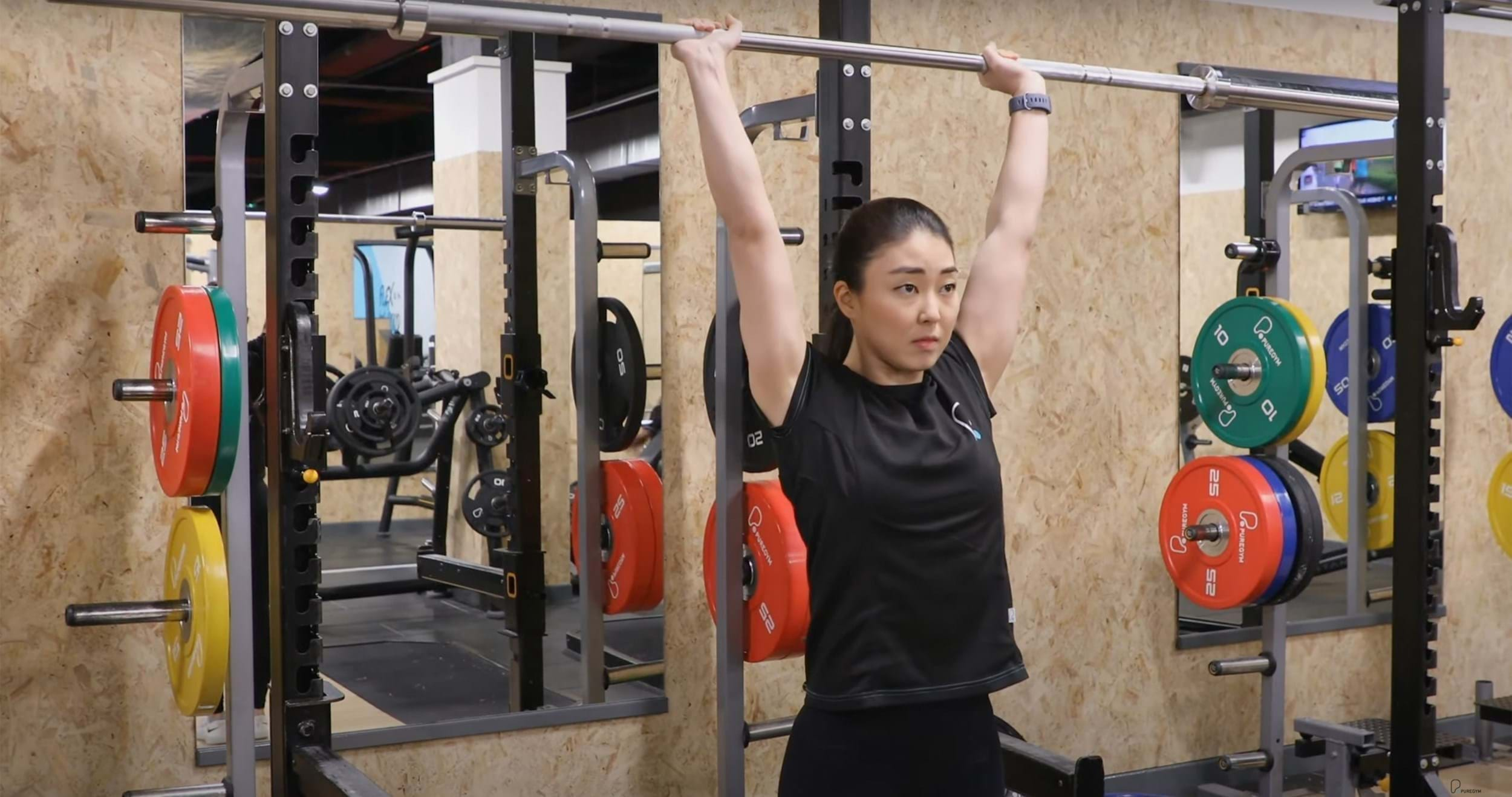Shoulder press
What is a shoulder press?
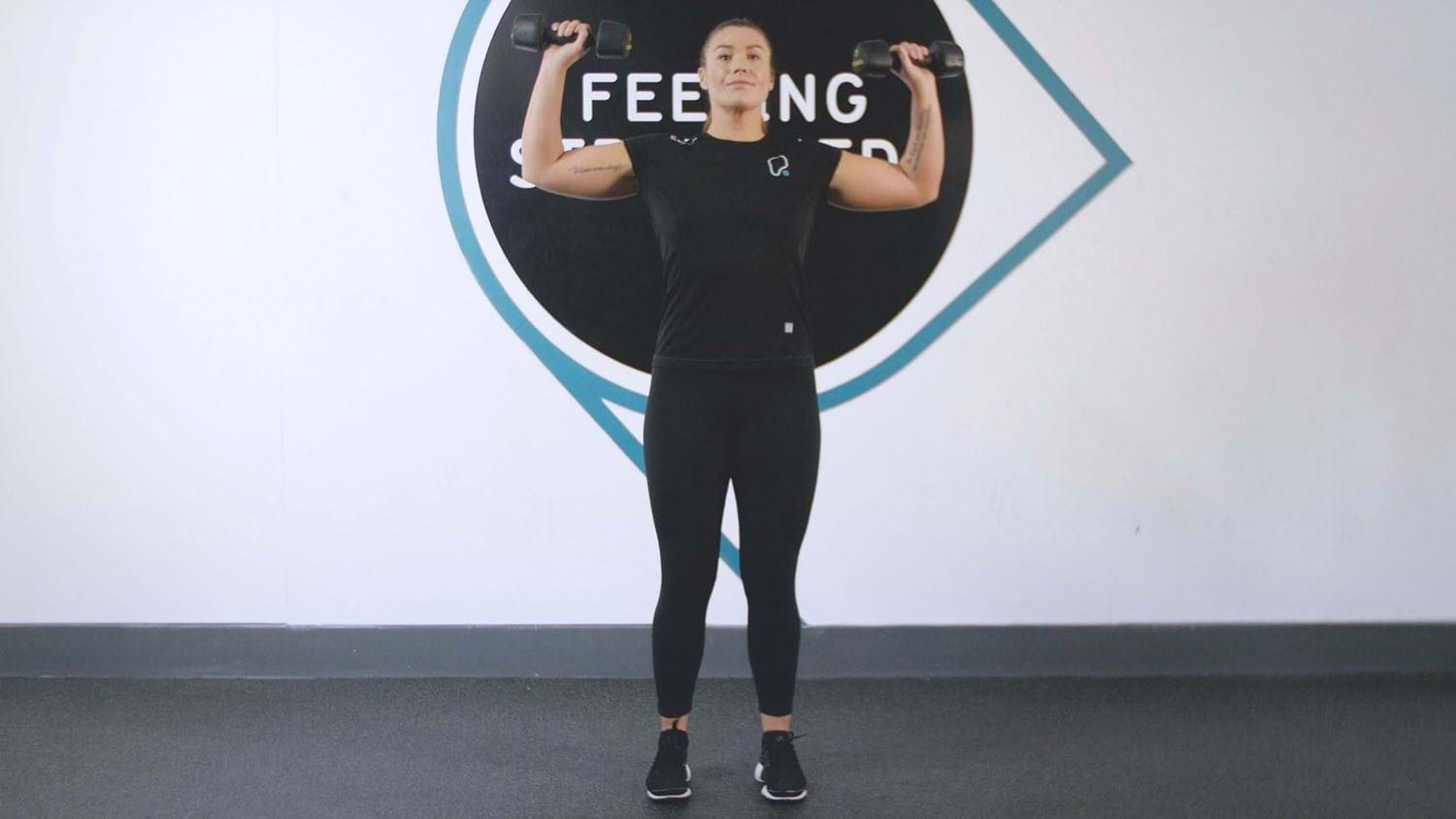
The shoulder press is one of the best exercises for strengthening your shoulders and upper back. The biggest benefactor of the shoulder press is the front portion of your shoulder muscle (anterior deltoid) but you'll also be working out your deltoids, triceps, trapezius and pecs.
It's not just your muscles that will reap the benefits of the shoulder press. The stress placed on your bones during the exercise causes them to increase their density and get stronger, decreasing the likelihood of osteoporosis.
The shoulder press also brings into action the stabiliser muscles in your shoulders, elbows and wrists, and the motion indirectly targets your abdominal muscles as you keep a straight core throughout. Together, this helps improve your stability and balance.
Making the shoulder press a part of your regular training regime will help you perform daily activities more effectively, and make you less likely to pick up injuries while doing other activities involving your upper body and arms.
To get you started, here are some of our favourites. If you're new to the exercise, start with the dumbbell shoulder press or shoulder press machine before moving on to the intermediate level exercises.
Check out our other arm and shoulder exercises: Bicep curls, Forearm and grip exercises, Front raises, Lateral raises, Rear delt exercises, Tricep extensions, Upright rows
COMMONLY ASKED QUESTIONS ON SHOULDER EXERCISES
The Arnold press can be bad for the shoulders, as with any exercise, if performed incorrectly, which can increase the risk of injury. If you're not sure how to do Arnold presses, ask a personal trainer for guidance. Practice on ensuring good form, rather than how much you're lifting. Common mistakes when performing Arnold presses include over-rotating, rushing through the exercise, and lifting a weight that is too heavy.
Shoulder presses can be a great exercise to strengthen your when performed correctly. But with that said, it can be bad when performed incorrectly, so make sure to take time in learning good technique to avoid injury.
The overhead press is commonly associated as a harder exercise to perform because you aren’t pushing against a mass that doesn’t move (as you would in a bench press for example), it requires using multiple muscles at one time where deficiencies can become more prominent, the primary muscles are relatively smaller muscles in comparison to other compound exercises. For reasons such as these, you would expect your one rep max to be lower.
A military press is performed with feet positioned more closer together than an overhead press. This removes stability, making it more challenging for the core than an overhead press.
We've covered instructions for both the military press and overhead press here.
Shoulder Press Tips
- To get the most contraction out of your shoulders don't fully extend your arms or touch the dumbbells together
- When performing the exercise standing up,** keep a slight bend in your knees** and chin parallel to the floor
- Keep your wrists straight so your hands are in line with your forearms as you lift the weights
Shoulder Press Variations

The dumbbell shoulder press is a great exercise for beginners to advanced lifters who want to develop strong, balanced shoulders.
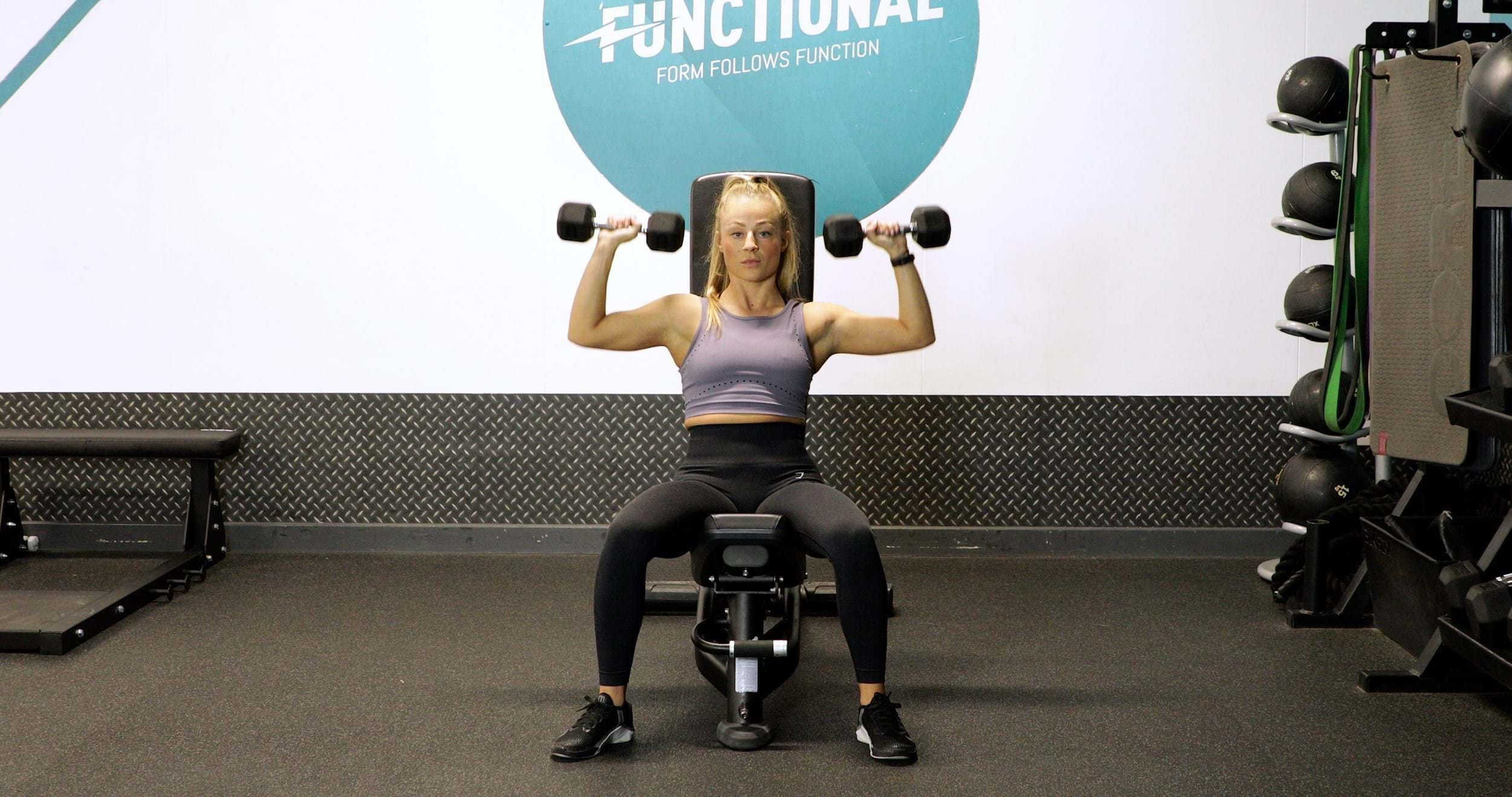
The seated shoulder press requires less stability which allows the shoulders to be targeted more efficiently.
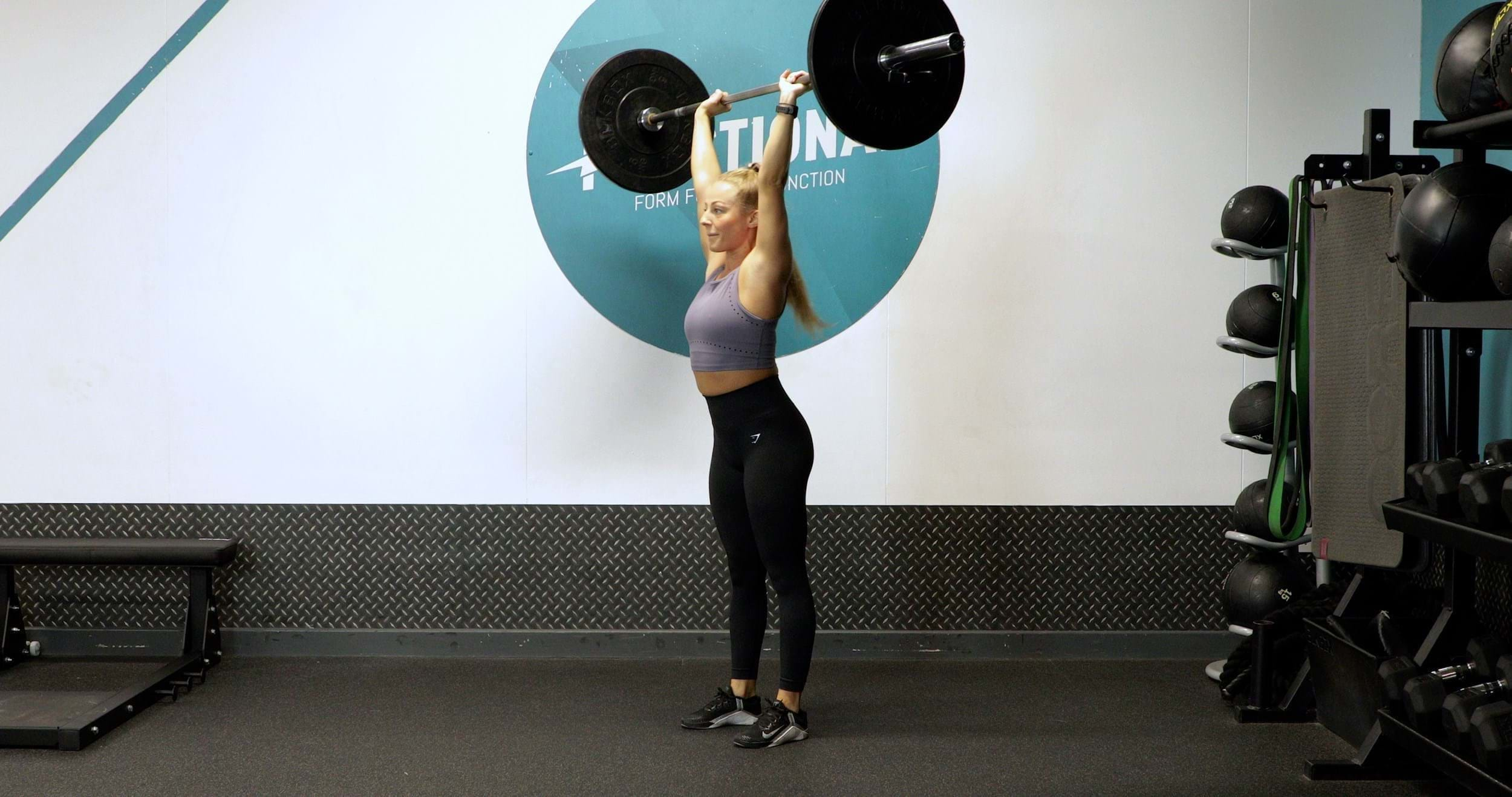
The barbell push press is a full body movement, with the quads and glutes helping to lift the weight.
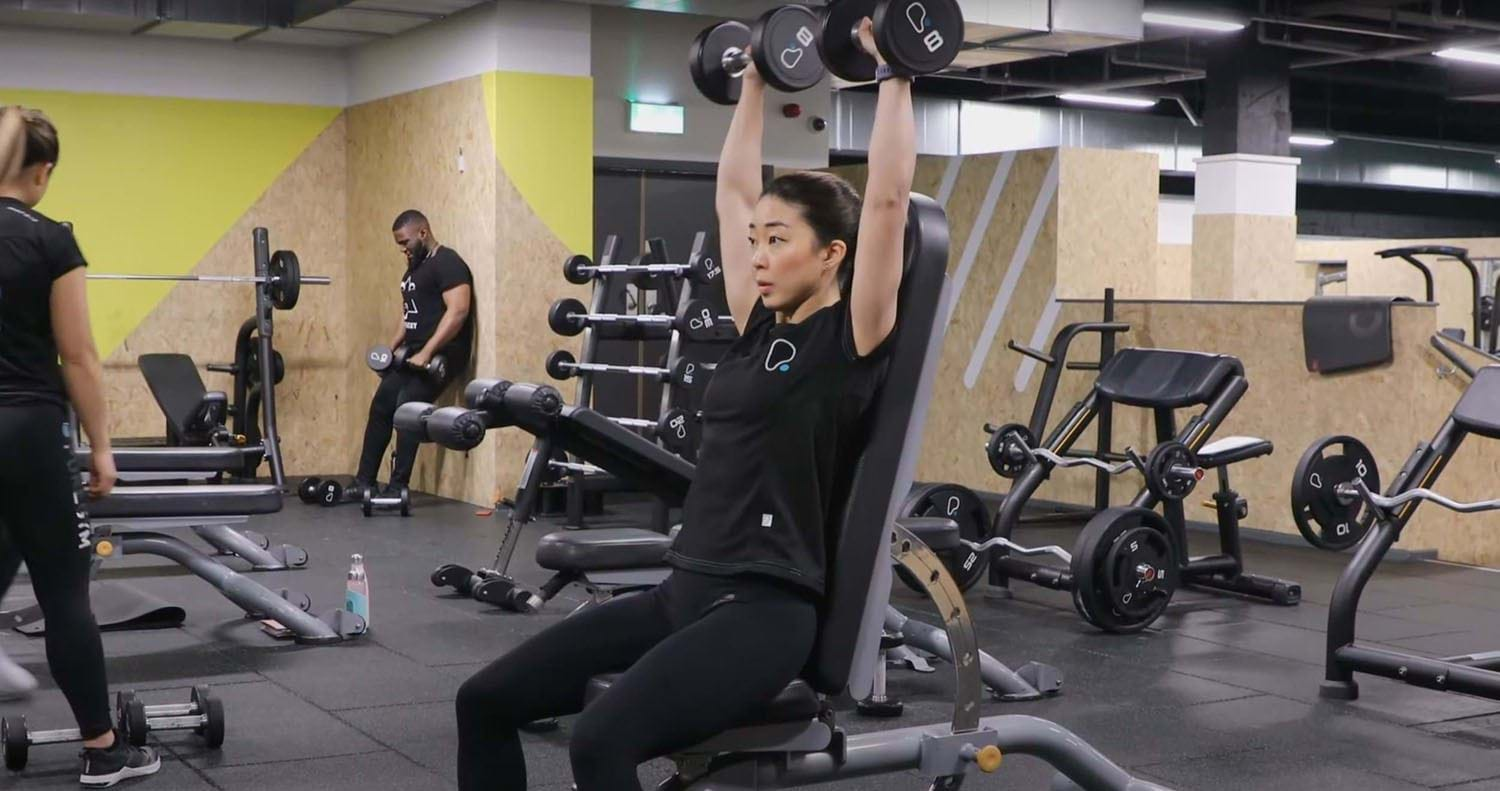
The Arnold press is a variation that uses wrist rotation to target all three parts of the deltoids.
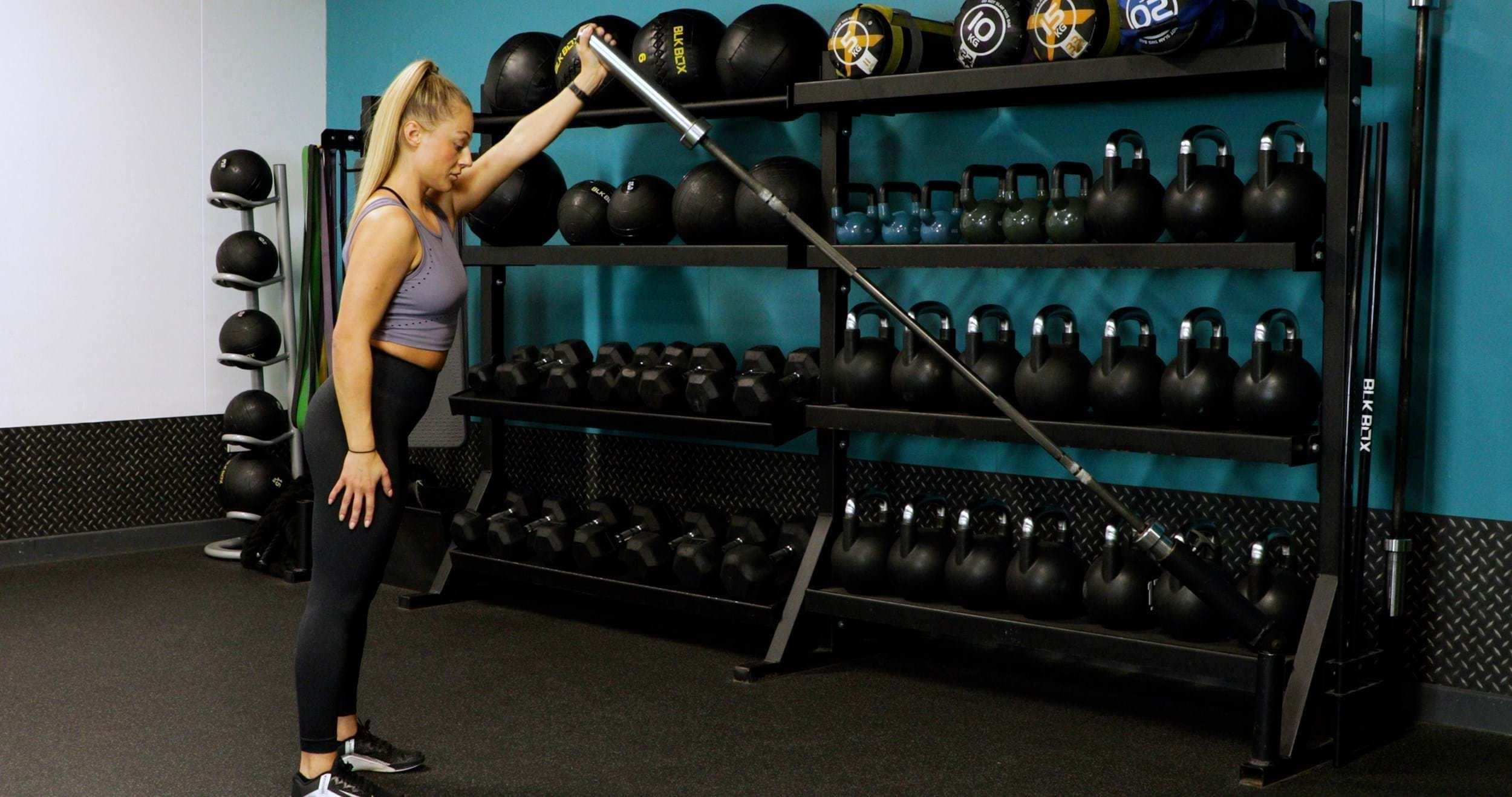
The single arm landmine press has a fixed bar path, allowing for greater stability and form.
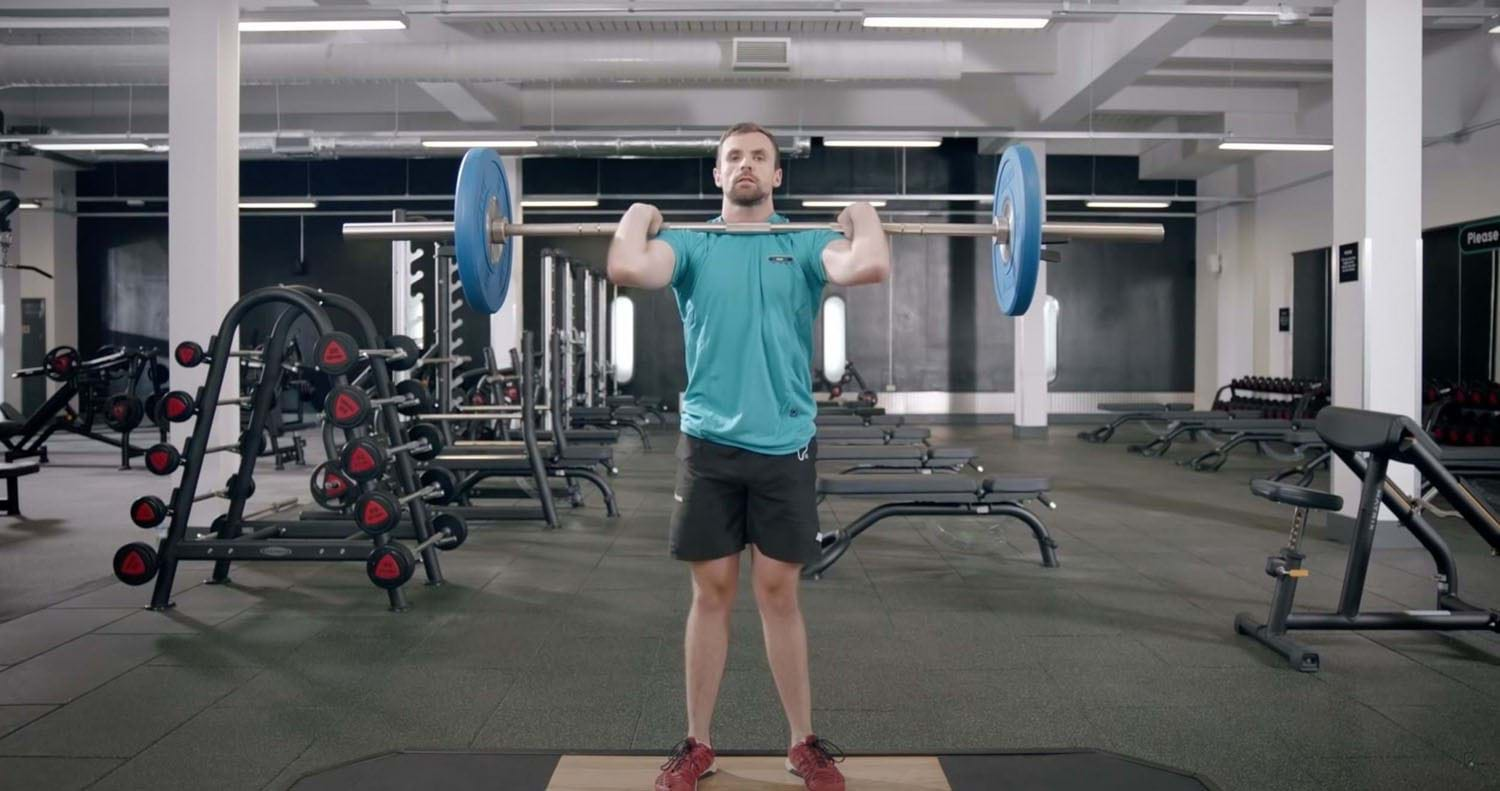
The clean and press is an advanced full body movement, and one of the three Olympic lifts.
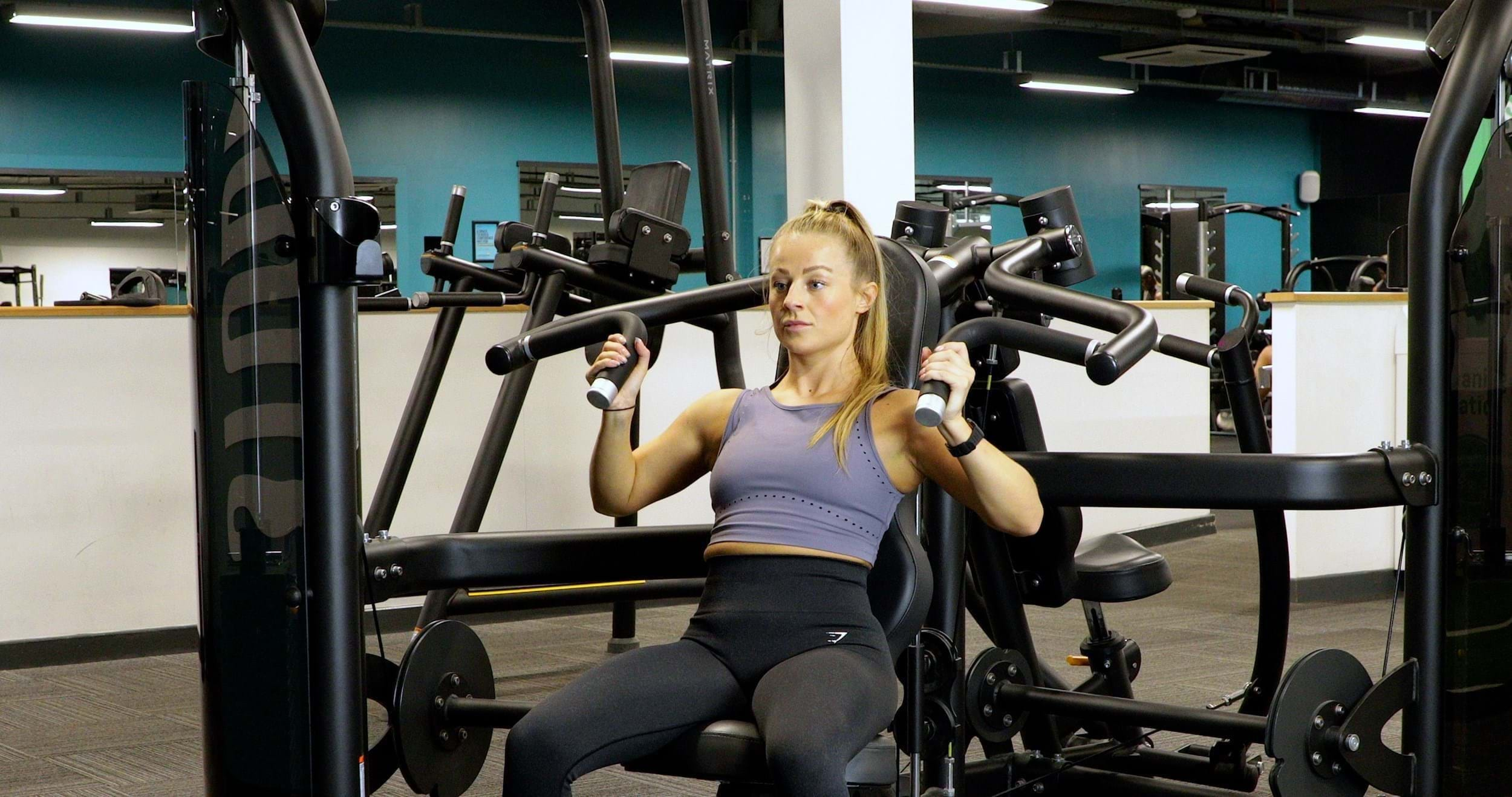
The seated shoulder press machine forces the correct position, allowing strength to be built with reduced risk of injury.
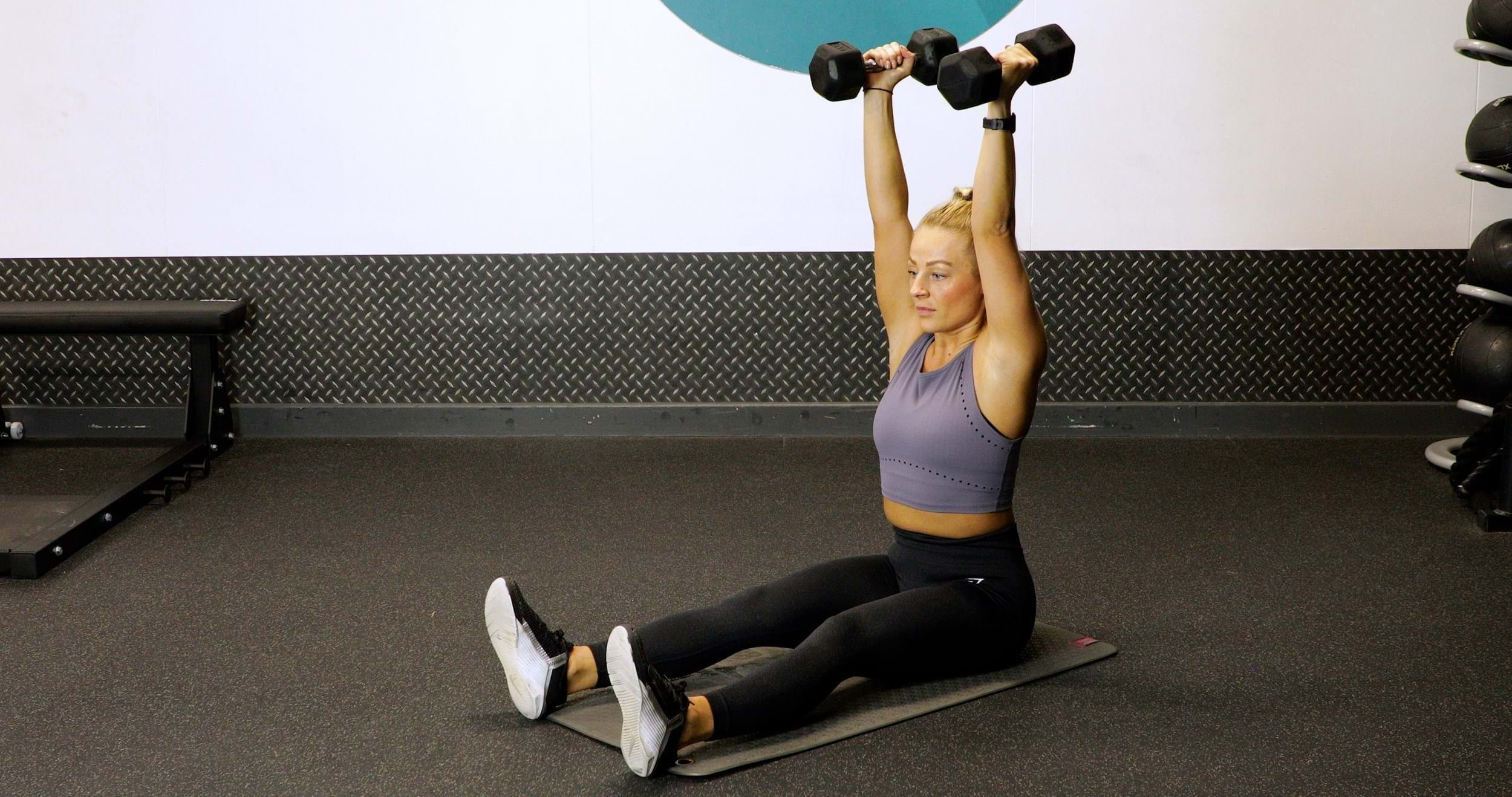
The Z press is a challenging shoulder press variation that isolates the deltoids by reducing lower body involvement.
If you’re not sure if any of the above exercises are suitable for you, please consult your doctor before you start it. Need guidance on how to perform the exercise? Ask a personal trainer at your gym.
